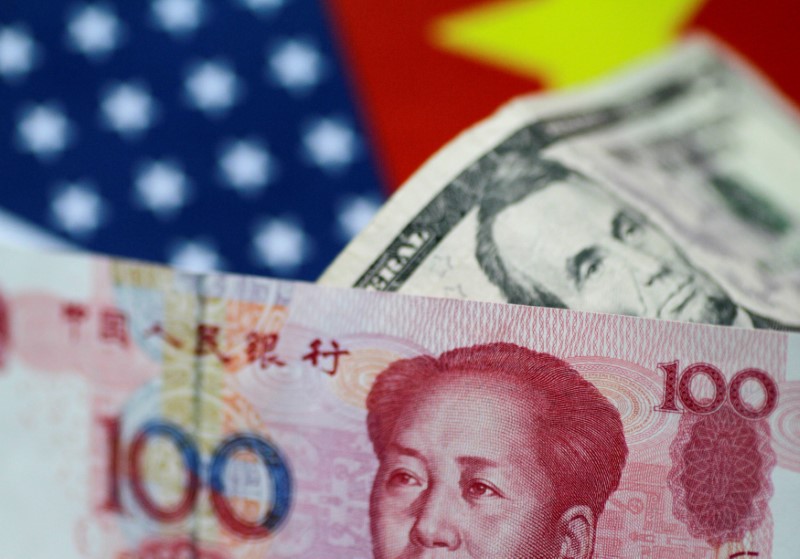Investing.com — The Chinese yuan hit a four-month low against a rising dollar on Monday as Asian currencies fell sharply following newly-elected US President Donald Trump’s latest threat to impose heavy tariffs on BRICS countries .
Trump threatened to impose 100% tariffs on BRICS countries – including Brazil, Russia, India, China and South Africa – in a social media post on Sunday. He promised dire economic consequences for any country that tries to undermine the dominance of the US dollar by supporting alternative currencies. His warning, aimed at countries seeking to reduce their dependence on the dollar in global trade, caused ripples in Asian markets, raising concerns about possible disruptions in trade ties.
The threat follows Trump’s earlier pledge to impose higher tariffs on goods from China, Mexico and Canada, raising fears of a renewed trade war between the world’s largest economies. The increased tensions weighed heavily on sentiment towards risk-driven markets in Asia, affecting regional currencies.
The stock rose 0.5%, while the stock rose 0.4%, benefiting from the dollar’s status as a global safe haven.
The South Korean won, and the Japanese yen led losses among Asian currencies, with the pair rising 0.6% and the South Korean gaining 0.7%.
The Singapore dollar and Thai baht pair fell 0.5% each.
The Indian rupee pair rose 0.2% to a record high of 84,708 rupees.
The rupee was also under pressure on Friday on data showing Indian growth slowing in the July-September period from the previous quarter. Yet India retained its status as the world’s fastest-growing major economy, surpassing China’s growth of 4.6% over the same period.
Chinese yuan under pressure despite strong economic data
The Chinese yuan’s onshore pair rose 0.3% to its highest level since late July, with little support from positive purchasing managers’ index data for November.
Chinese figures for November showed modest growth, pointing to a recovery in factory output, while the private sector also rose to its highest level since June. The figures were seen as a positive sign for the Chinese economy after a barrage of aggressive stimulus measures over the past two months.
However, concerns remain about the impact of rising trade tensions on Chinese exports, which remain sluggish. The yuan weakened 1.8% against the dollar in November, driven by fears of an intensification of the US-China trade dispute, especially after Trump’s election victory.
Dollar rises as investors look for interest rate signals; regional data awaits
The dollar started the first day of the week and the month on an optimistic note as markets now expect a slower rate cut from the Federal Reserve, although the Fed is widely expected to cut a quarter of a percent at the December Fed meeting . Investors are still looking for more clues about the central bank’s interest rate outlook.
The Fed will speak on Wednesday, while key US data for November will also be released later this week.
In the Asia-Pacific region, the Reserve Bank of India will decide on the matter on Friday and is widely expected to keep interest rates unchanged amid persistent Indian inflation.
Australia will announce its third-quarter results on Wednesday.


